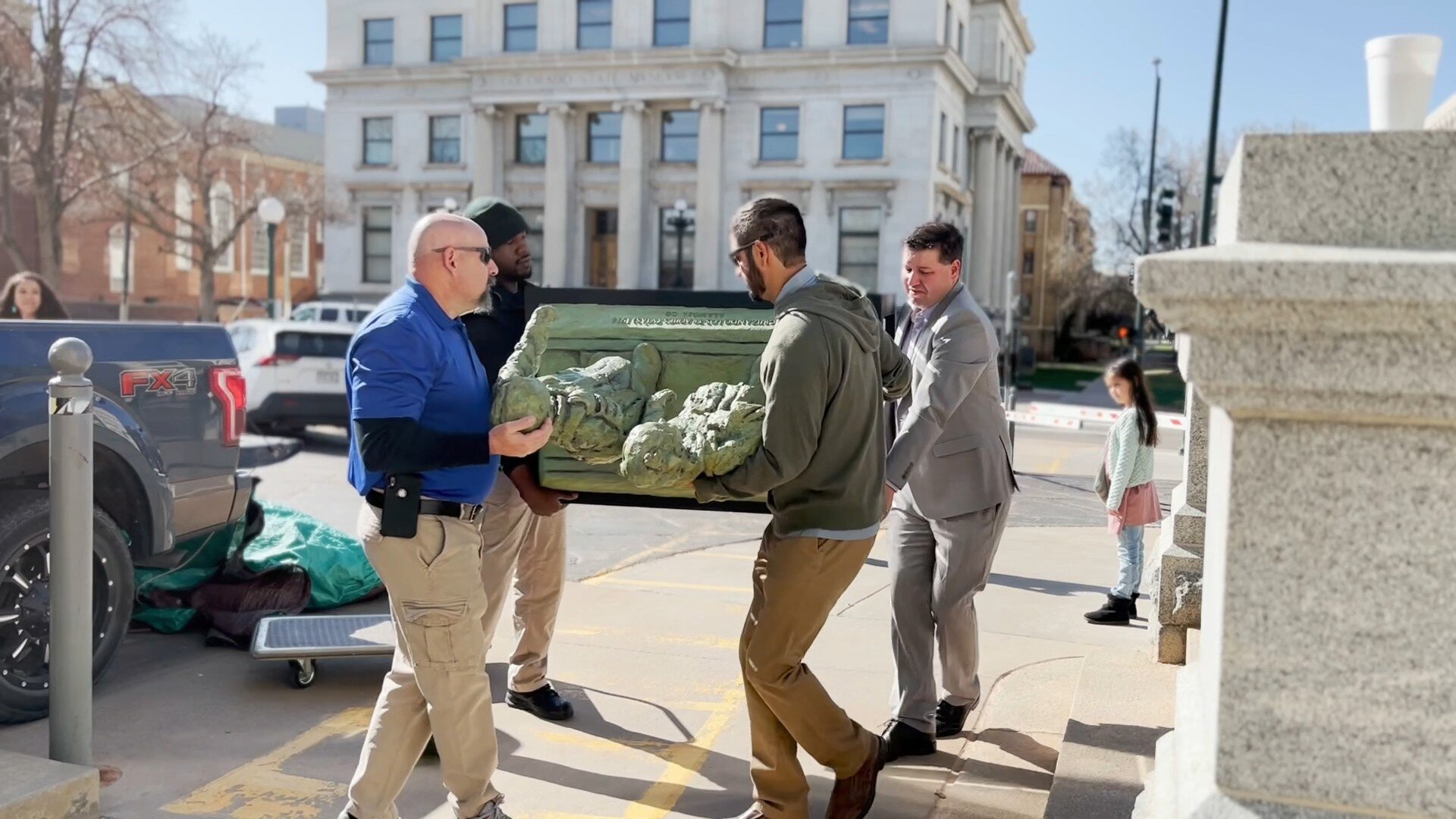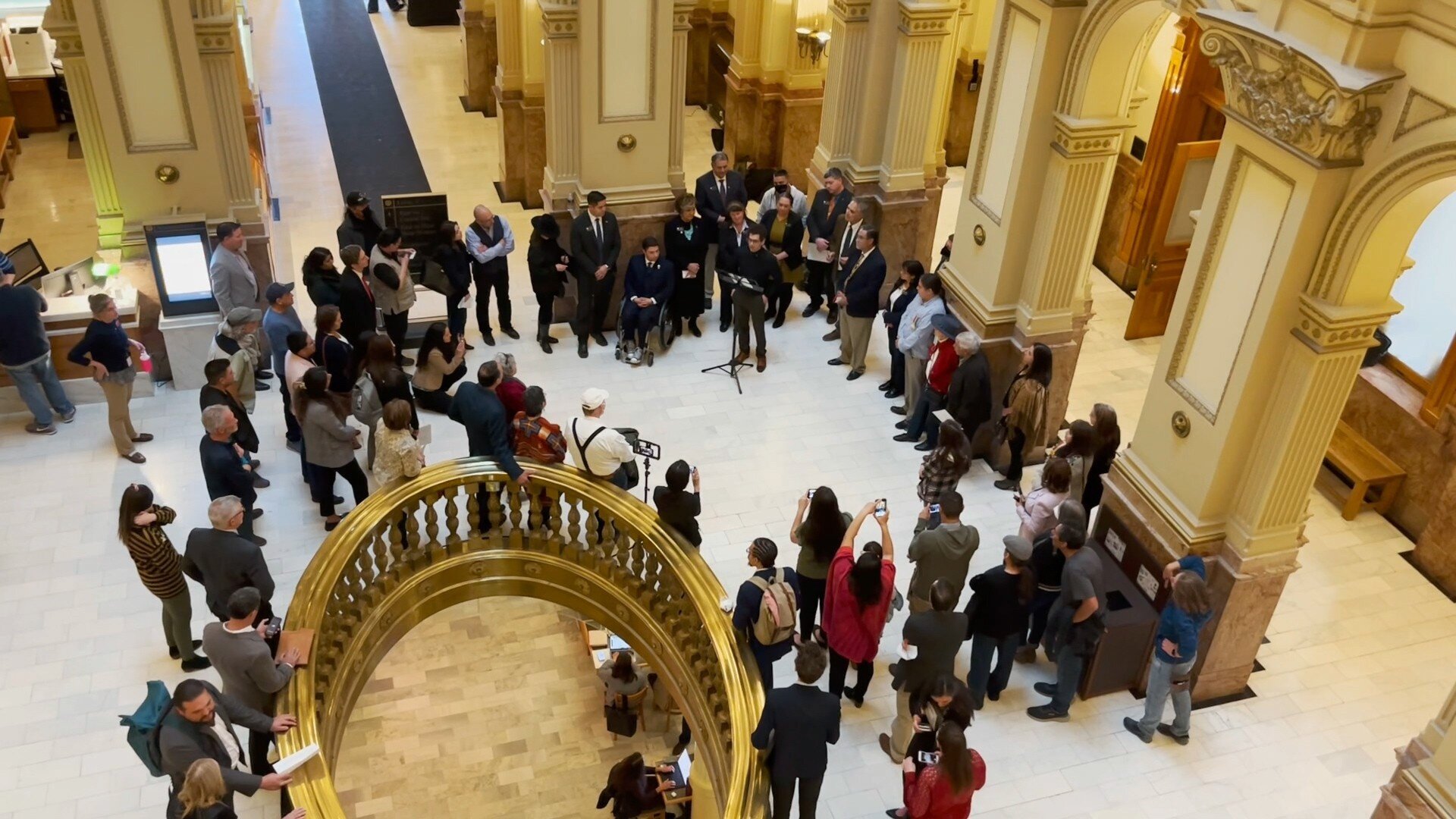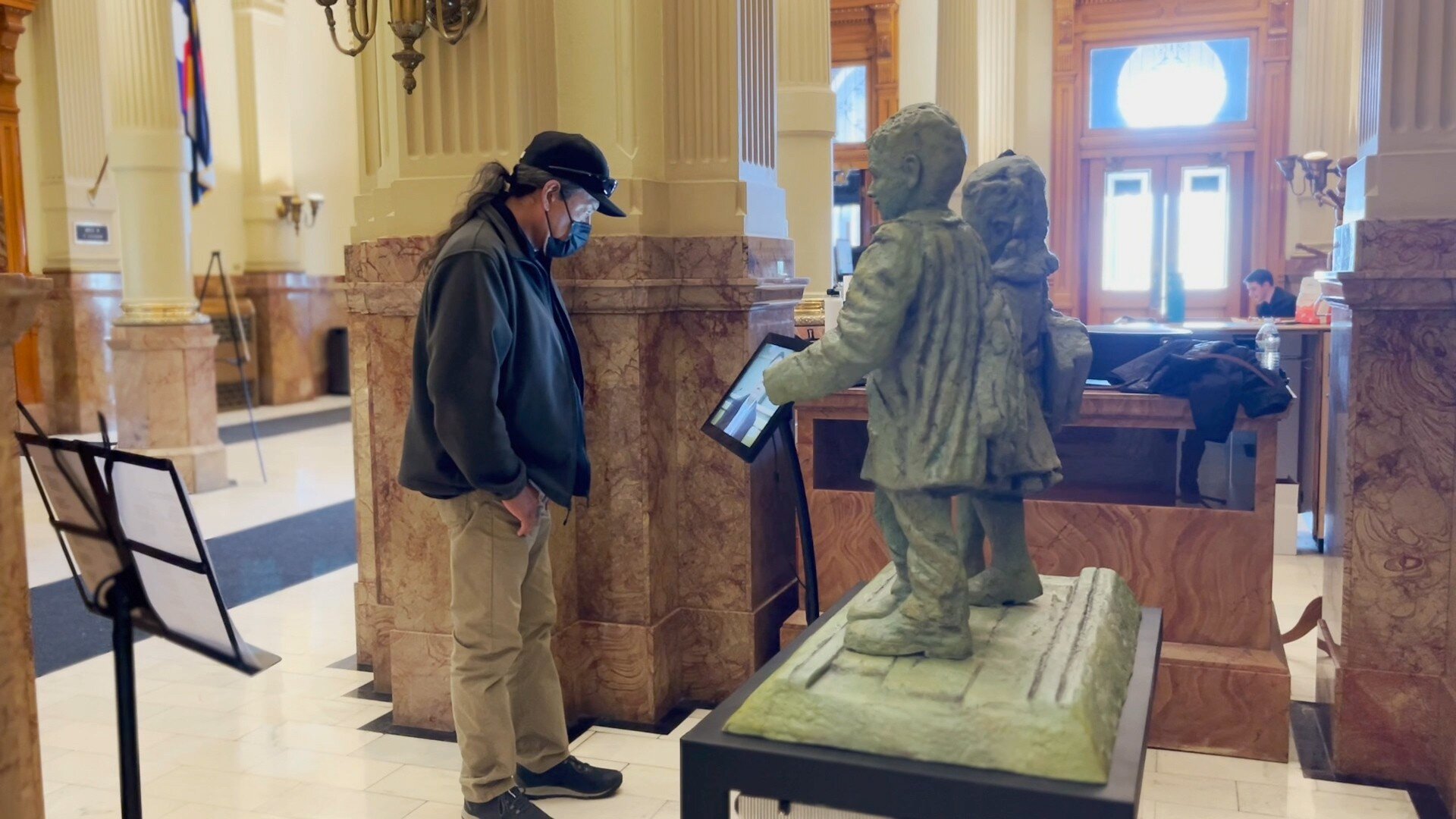Historic school desegregation decision honored at Colorado State Capitol

DENVER — The 108th anniversary of one of the nation’s oldest school desegregation cases was celebrated by over 100 attendees Thursday, April 14 at the Colorado State Capitol.
A bronze statue depicting two school children was dedicated in honor of Maestas v. Shone and the Board of Education, a historic desegregation case filed in Alamosa in 1912.

The statue was crafted by New Mexican Reynaldo “Sonny” Rivera and was commissioned by the Maestas Case Committee to raise awareness of the nearly-forgotten case. Thursday’s events were organized by Maestas Case Committee member Katie Dokson with support from the team of academics and legal experts who brought the case to light.
Earlier that morning, Senators Robert Rodriguez and Cleave Simpson and Representatives Donald Valdez and Alex Valdez, with the support of the Latino Caucus, introduced a joint tribute recognizing the significance of the 1914 decision.
In Maestas et al. vs. Shone, families of Mexican and Spanish descent whose children attended separate “Mexican” schools, despite other schools being available closer to their homes, filed suit against the Board of Education after failed attempts to gain the attention of local education authorities.
At the time of the case, the Colorado Constitution prohibited discrimination based on race, and therefore, the community’s attorney argued, the district could not deny children access to a particular school because of race.

In what was ultimately a two-year legal effort to desegregate Alamosa’s schools, in March 1914, District Judge Charles C. Holbrook ruled in favor of Francisco Maestas and the community he represented. The only way to “destroy this feeling of discontent and bitterness which has recently grown up” between communities of color and Anglo residents, Holbrook’s decision stated, “is to allow all children, so prepared, to attend the school nearest them.”
The case was never appealed — though the school district filed a motion to vacate, in a request to overturn the judge’s decision. On April 17, 1914, Judge Holbrook denied that motion.
The case was almost forgotten. The school district kept no records. It remained buried for over 100 years — and was discovered by accident.
The statue, titled Cruzando Los Traques (Crossing the Tracks), will be on display alongside a short documentary video produced by Rocky Mountain PBS through the end of the legislative session before embarking on a traveling educational tour at different sites throughout Colorado and New Mexico. You can visit maestascase.org to learn more.

Presentations made by legislators and Maestas Case Committee members Thursday illuminated how the historic decision helped shape the cultural and educational climate in the San Luis Valley, and beyond.
Each expressed gratitude that the case was uncovered.
Donald Valdez, a Democratic Representative of the San Luis Valley, said, “Growing up, I didn’t even know the segregation case of Maestas vs. Shone was in Alamosa. We need to continue talking about it.”
Republican Senator Cleave Simpson from Alamosa said he, like most people, had not heard of the case until the last few years. “I’m honored that the state of Colorado got it right in 1914,” he told the crowd.
Retired District Judge and Maestas Case Committee head Martín A. Gonzalez, said, “It’s a watershed moment for the case, and for my gente. It means a great deal.”

Dr. Antonio Esquibel, a historian, educator, and member of the S.P.M.D.T.U. Concilio #7 in Denver, wrote a corrido to honor the occasion. A corrido, he explained, is a traditional way of popularizing a person or event through song.
In addition to the traveling statue and video exhibit, a relief of the bronze will be permanently installed at the Alamosa Municipal Court building in a ceremony planned for October 8, 2022.
Kate Perdoni is a multimedia journalist at Rocky Mountain PBS and can be reached at kateperdoni@rmpbs.org.